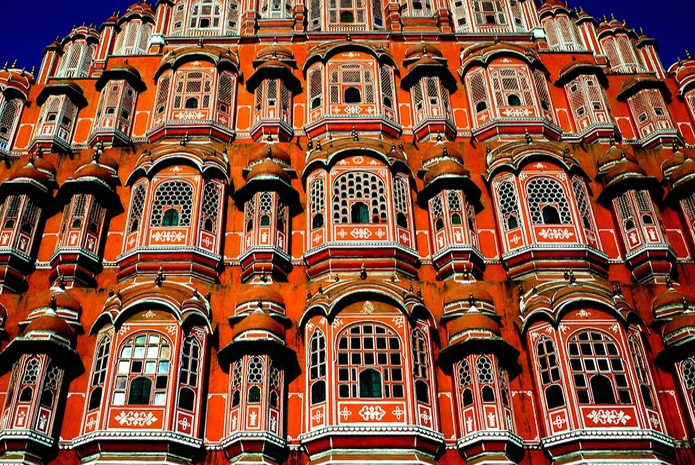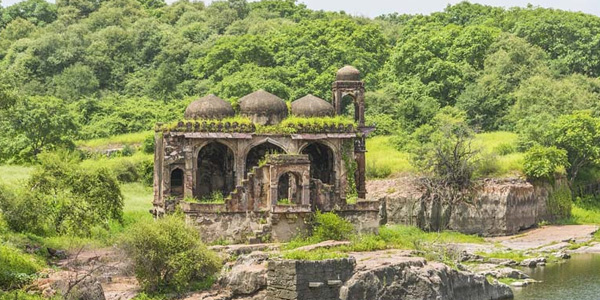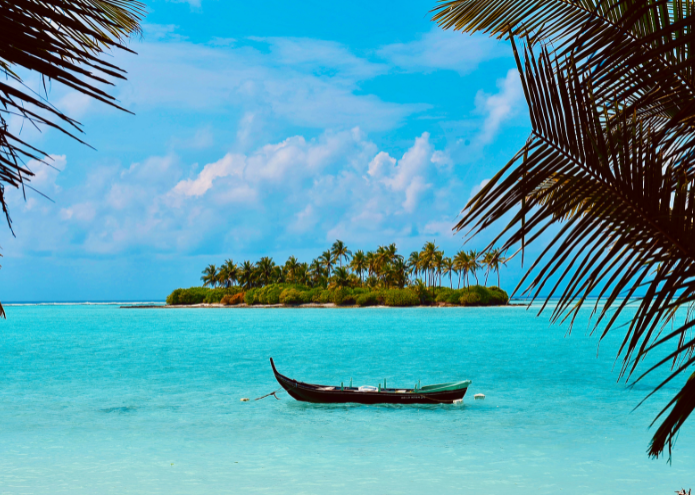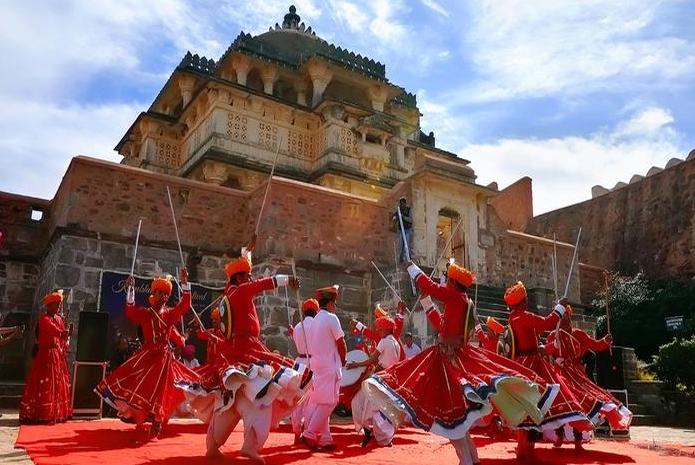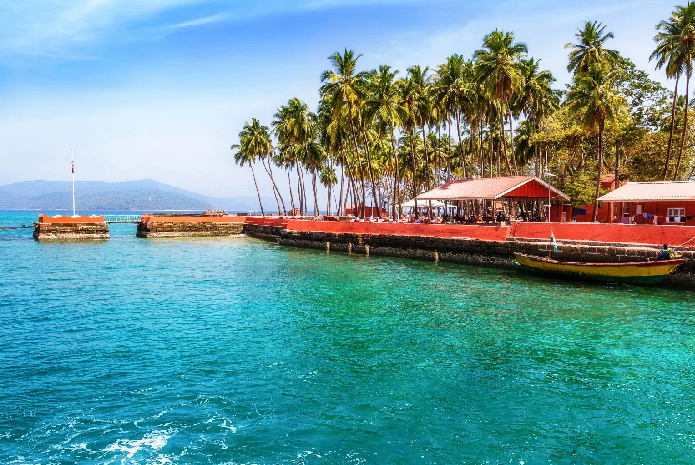“Grain by Grain, a loaf. Stone upon stone, a palace.” – George Bernard Shaw
They represent the time that once ruled the place, the grandeur that leaves us spellbound, and the architecture that leads our curiosity to ask how was that possible back then. Indeed, we are talking about the forts and palaces in Rajasthan that are not to be missed if you are hitting the roads during this monsoon season! Here we have compiled the Top 25 Palaces in Rajasthan for your upcoming Rajasthan tour Packages assuring a memorable holiday!
1. Amer Fort:
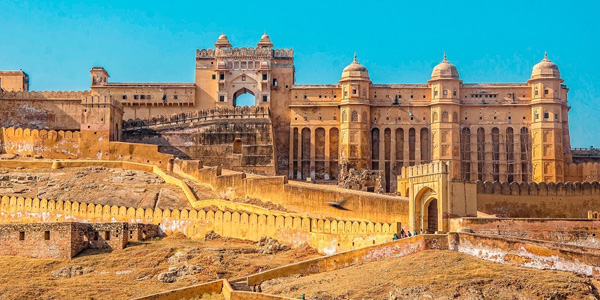
Image Source: themaharajaexpress.com
One of the 6 UNESCO Heritage Site as apart of Hill Forts of Rajasthan and Jaipur’s landmark tourist attraction is Amer Fort. The Fort is heavily influenced by the Mughal architecture and is constructed of marble and red sandstone. The palace located within the Fort was home to the Rajput Maharaja and royal family. The Fort is spread over 4 square km of an area on the Aravali ranges. Some of the attraction within the Fort are Diwan-e-Khas (Hall of Private Audience), Diwan-e-Aam (Hall of Public Audience), Elephant ride, Sheesh Niwas (Mirror Palace) also known as Jal Mandir and Sukh Niwas – It is a palace where the climate is made cooler artificially due to the wind blowing over the water.
2. Mehrangarh Fort:
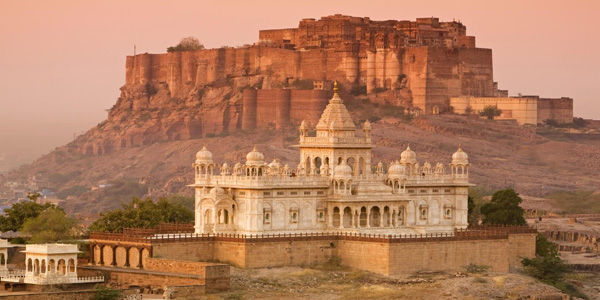
Image Source: itl.cat.org
Mehrangarh Fort stands tall above the city of Jodhpur at 410 feet. It was built during 1459 by the then Maharaja Rao Jodha. The Fort is admired for its architectural beauty, Cultural Heritage, and formidable walls. It is also one of the biggest forts in India. Rudyard Kipling mentions Mehrangarh as “A Palace that might have been built by Titans and colored by the morning sun.” Earlier, Jodhpur city was limited within the walls of the Fort; however, in 50 years, the city outgrew the Fort. Some of the famous movies are shot here, such as Dark Knight Rises, The Jungle Book, and many more.
3. Jaisalmer Fort:
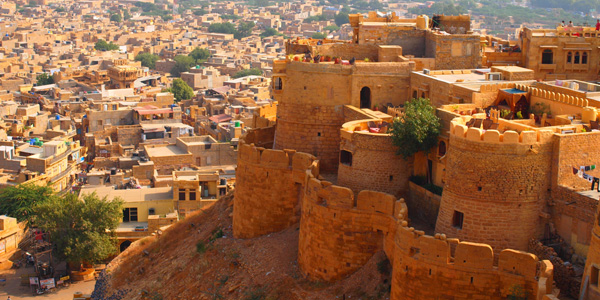
Image Source: revv.co.in
Jaisalmer Fort is one of the limited living forts in the world, as one-fourth of the city’s population continues to live within the fort area. The second oldest Fort was built in 1156 AD by Maharaja Rawal Jaisal, the architecture and blends with that of the desert, and that’s the reason it is also called Golden Fort or Sonar Quila by many! In 2013 it was included in the UNESCO Heritage Site.
4. Ranthambore Fort:
Image Source: swantour.com
Ranthambore Fort is located within the Ranthambore National Park, the precise history about when the Fort was built is not clear. However, it is believed that
King Jayant built the Fort during the 10th AD. No Rajasthan trip is complete without the visit to Ranthambore Safari and the UNESCO Heritage Site Ranthambore Fort!
 Loading Packages...
Loading Packages...5. Chittorgarh Fort:
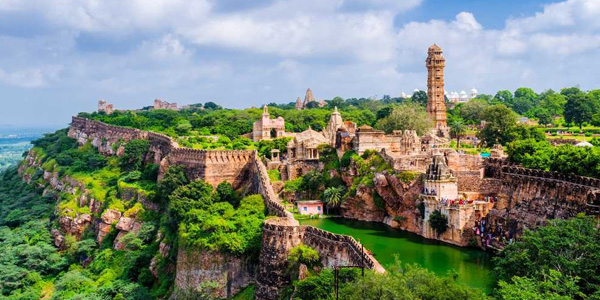
Image Source: shutterstock
One of Rajasthan’s largest forts, Chittorgarh Fort, is spread over 700 acres on a hill at 590 feet. Though located on the hill, it has 22 water bodies; that’s why people also call it Water Fort. Initially, the Fort was known as Chitrakut and was built by Maurya ruler. There are also Buddhist stupas which can be found by the Jaimal Patta Lake. The Fort has survived three attacks and still stands tall. Don’t miss out on adding this UNESCO Heritage Site to your Rajasthan tour package!
6. Gagron Fort:
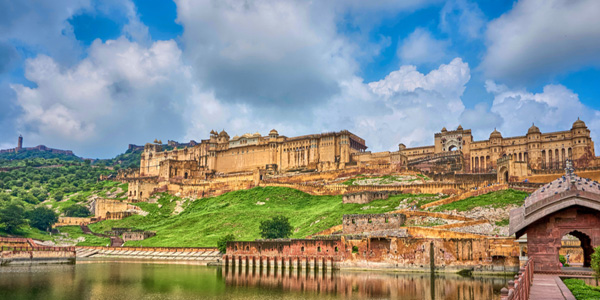
Image Source: wendyperrin.com
Another UNESCO Heritage Site on our list is Gagron Fort, located in the city of Jhalawar. Surrounded by water, the Fort was built by the Dod Maharaja Bijaldev in 12th AD. Something that sets apart this Fort from the rest is that the Fort doesn’t have a foundation. It is one of the ideal examples of 12 Vedic architecture called Jaldurg. The Fort has survived 14 battles; however, that has not let the glory of the fort fade away.
7. Kumbhalgarh Fort:
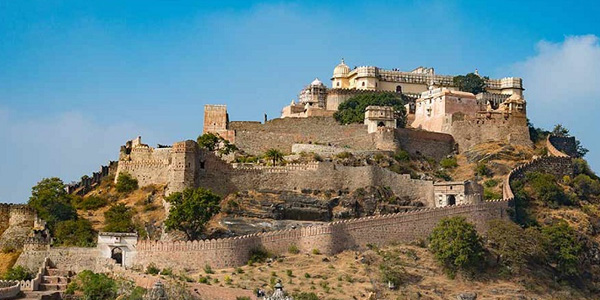
Image Source: memorableindia.com
Kumbhalgarh Fort completes our UNESCO Heritage Site of Hill Forts of Rajasthan. Growing, we all have read about the bravery of the great Mewar ruler Maharana Pratap and his horse Chetak fighting against Mughal Emperor Akbar. Built during the 15th Century, the Fort is counted to be one of the biggest in the world. It has the second-longest wall in the world after the Great Wall Of China.
8. Junagarh Fort:
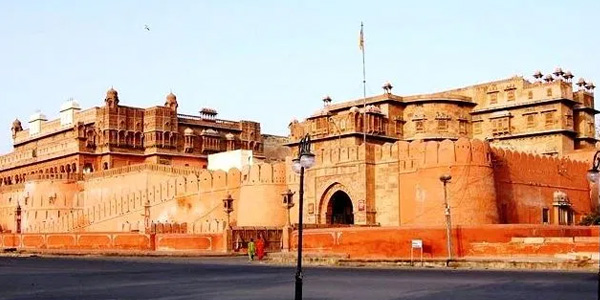
Image Source: i0.wp.com
Early called Chintamani and later changed to Old Fort or Junagarh Fort. Unlike all other forts, Junagarh is not built the hills but in the city. Bikaner city is built around the Fort. Despite being attacked by numerous times, it was won by Kamran Mirza in one day battle.
9. Jal Mahal:
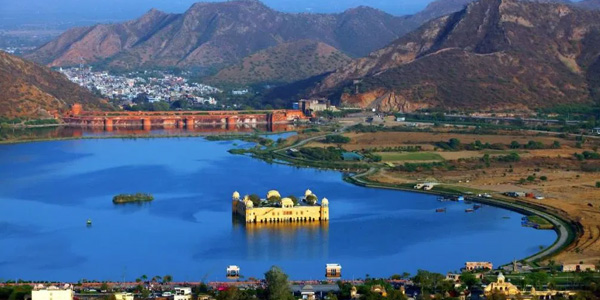
Image Source: i0.wp.com
Built-in the 1750s by ruler Jai Singh in the middle of Mansagar Lake for the royal family little gateway. The palace is five floors tall and heavily influenced by Rajput style architecture. A lot of restoration work has been done since 2005, and now the lake is also home to the great migratory birds such as Flamingos!
10. Hawa Mahal:
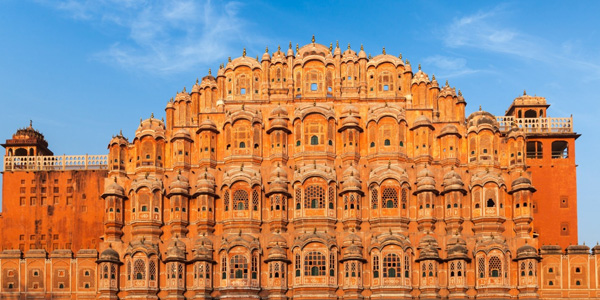
Image Source: greatdays.co.uk
Undoubtedly the most photographed mahals in the entire Rajasthan. The palace of winds or Hawa Mahal is a combination of red and pink sandstone. Inspired from Khetri Mahal, Lal Chand Ustad made 953 small windows made in the honeycomb structure so that the ladies back in the day can see the festivals and celebrations happening outside without being seen.
11. Jaipur City Palace:
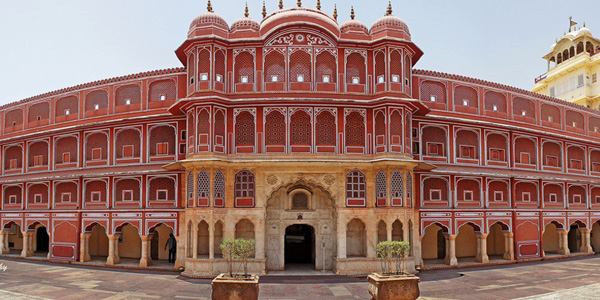
Image Source: rajasthanpost.com
It was built in 1729 as the residence for the royal family. The palace was host to cultural events, commerce, Industry, and religious activities. The royal family still uses the palace as their residence. However, some people are allowed in some parts of the palace.
12. Lake Palace Udaipur:
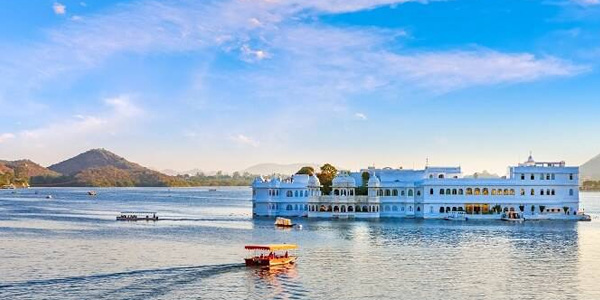
Image Source: localsamosa.com
Counted as among one of the best Heritage Hotels, Lake Palace Udaipur takes you to the old royal time with modern amenities. The palace was built between 1743 to 1746 by the then Maharana Jagat Singh as a summer retreat palace. This palace in Rajasthan is ideal for honeymooners and people looking for that perfect weekend gateway vacation.
13. The Deogarh Mahal:
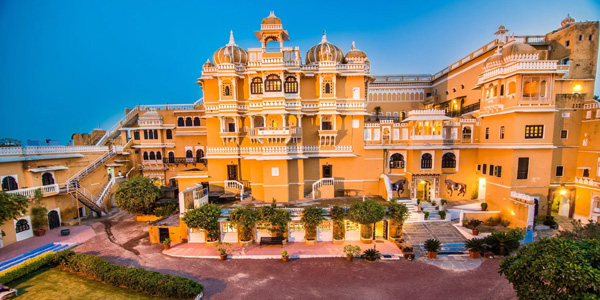
Image Source: thumbnails.expedia.com
It was built back in 1670 as the residence of the royal family. Deogarh Mahal has been said to have inspired the creation of the Hawa Mahal. The 50-room is converted into the hotel while the royal family still lives in the palace. The Mahal has witnessed long friction of battles, and now it rests in peace!
14. Rambagh Palace:
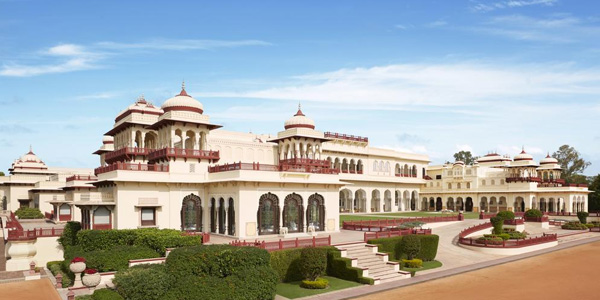
Image Source: q-cf.bstatic.com
The journey of Rambagh Palace has been interesting; it was first built in 1835. Back then, it was located in the middle of a dense forest, so it was converted into a hunting lodge. In 1931 it was made as to the prime residence of the Maharaja Sawai Mann Singh 2. After independence, the palace was handed over to the government due to the increase in the maintenance cost. Today it boasts of 78 beautifully restored luxury rooms.
15. Udai Bilas Palace:
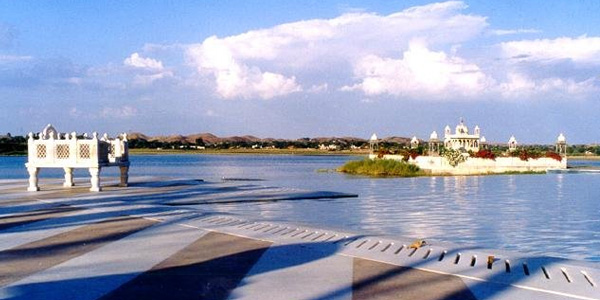
Image Source: gomobi-media.s3.amazonaws.com
Udai Bilas Palace is also known as Ek Thambia Mahal – Which means one pillared palace. The pillar is carefully carved sculptured, panels, marble carvings, a veritable of Rajput architecture, bracketed windows, balconies, and panels were made in the 19th Century by the Maharaja Udai Singh 2. Visit the old palace with a touch of Art Deco style of the Rajputs!
16. Alsisar Mahal:
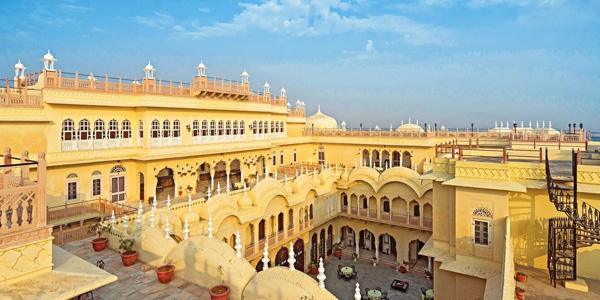
Image Source: images.thrillophilia.com
Built during the 18th Century, right from the entrance to the room, the Alsisar Mahal is an ideal option for people looking to live regal India. The cherry on the cake is the Magnetic Fields Festival that draws the national and international famed artists every year in December.
17. Neemrana Fort Palace:
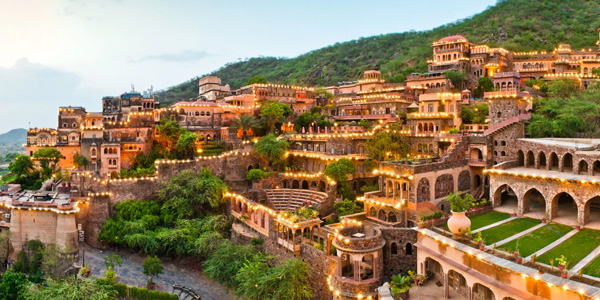
Image Source: es.cloudinary.com
Built-in 1464, after the independence, the Neemrana Fort Palace was abandoned only to be bought by Aman Nath in 1986 to be brought back to its present glory. Many prominent films have been shot here, such as Dil Se, Emirates Advertisement, and Major Saab.
18. Ramathra Fort:
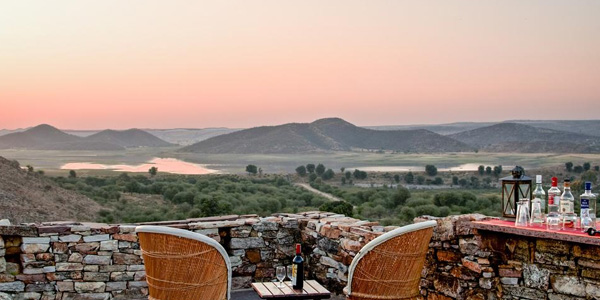
Image source: q-cf.bstatic.com
If countryside view, lake, and a Fort is something that is on your mind, Ramathra Fort is your excellent choice. Its located between Bird Sanctuary in Bharatpur and Ranthambore Tiger Reserve. Plan your trip from October to March. Add the rustic experience on your Rajasthan Trip.
19. Badalgarh Fort:
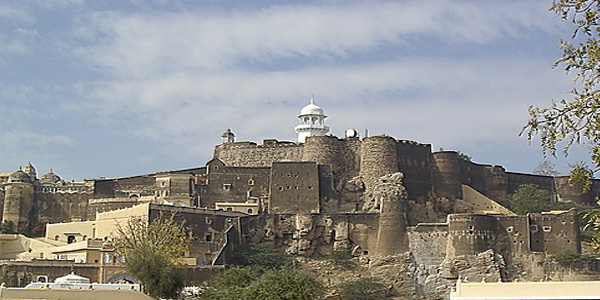
Image Source: 1.bp.blogspot.com
Meet Badalgarh, the old Fort in Shekhawati region, sitting on hill table rock. It was built by Nawal Fazl Khan by the end of the 17th Century. Unlike any other palaces in Rajasthan, which are of more grandeur, Badalgarh was built to protect Camels and Horses, so the royal architecture is missing. The Fort has three tombs of the nawabs and collection of weapons used in the old days.
20. Umaid Bhawan Palace:
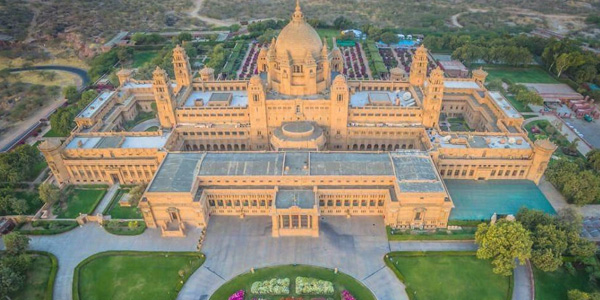
Image Source: i.pinimg.com
Umaid Bhawan Palace is one of the largest private residences in the world. The construction started in 1929 and completed in 1945. The hotel has 347 rooms with the architecture based on Indo-Gothic style. Inside the stories of Rajput bravery can be seen in the paintings in the palace. Do plan to visit World’s Best Hotel as per TripAdvisor Traveller’s Choice Awards.
21. Taragarh Fort:
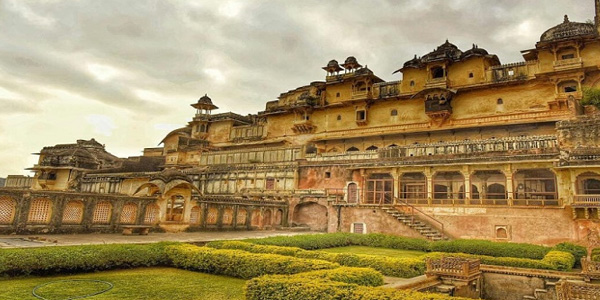
Image Source: indiamyworld.com
The military base during the Mughal era in Ajmer; Taragarh Fort is considered one of Rajasthan’s best forts. Built-in 1113 AD by the then Maharaja Ajaypal Chauhan, the tunnels are used extensively as a quick escape from the Fort during the time of the attack.
22. Lohagarh Fort:
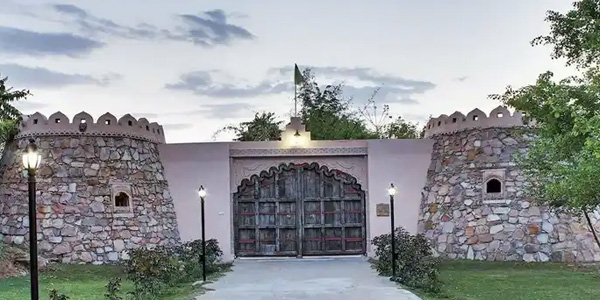 Image Source: ik.imagekit.io
Image Source: ik.imagekit.io
Iron Fort or Lohagarh Fort is the strongest forts ever made in Indian history. Even the Britishers were not able to pierce through the Fort. There is a legend that the gate of the Fort is the same which Alauddin Khilji had taken from the front of Chittorgarh. The Fort has paintings celebrating the victory against Mughals and Britishers.
23. Bhangarh Fort:
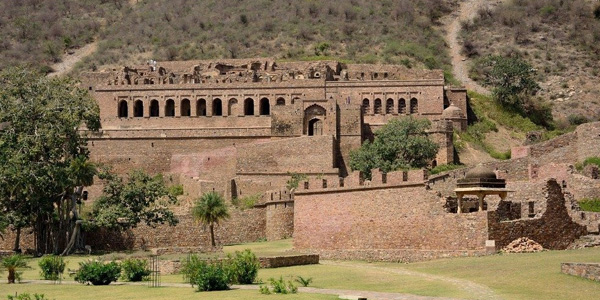
Image Source: hoteldekho.com
The local legends mention that the Fort is haunted, and even the government has posted a notice that it is unlawful to enter the Fort after the sunset. However, it is safe to make your trip during the sunlight! The Fort was built in the 17th Century by Bhagwant Das. Bhangarh maybe haunted or not, but it’s worth making the trip and experiences the marvel!
24. Lalgarh Palace:
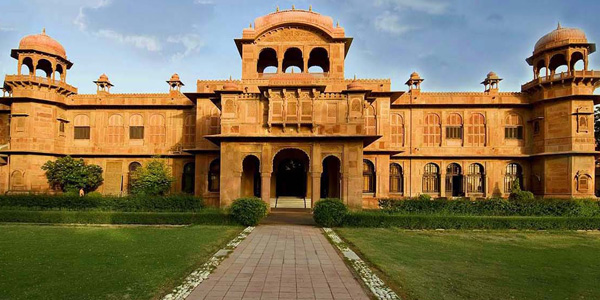
Image Source: live.staticflickr.com
Sir Ganga Singh built Lalgarh Palace between 1902 to 1926. As the Fort is built during the British rule, it is obvious that the influence of Indo-Gothic architecture is evident. Today the palace is being converted to a hotel and is run by the royal family.
25. Khimsar Fort:
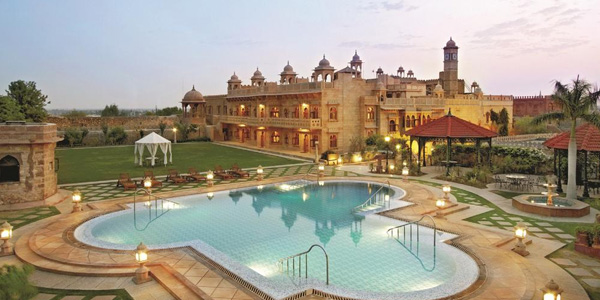
Image Source: r-cf.bstatic.com
Khimsar Fort was built by Rao Karamsi in 1523, located to the far east side of Thar Desert. The Fort is maintained of the past glorious era of Karamsot Rathores, vintage car museums, and desert oasis.
Hope in this list you find your Fort / Palace in Rajasthan that you will visit on your next Rajasthan Trip!
